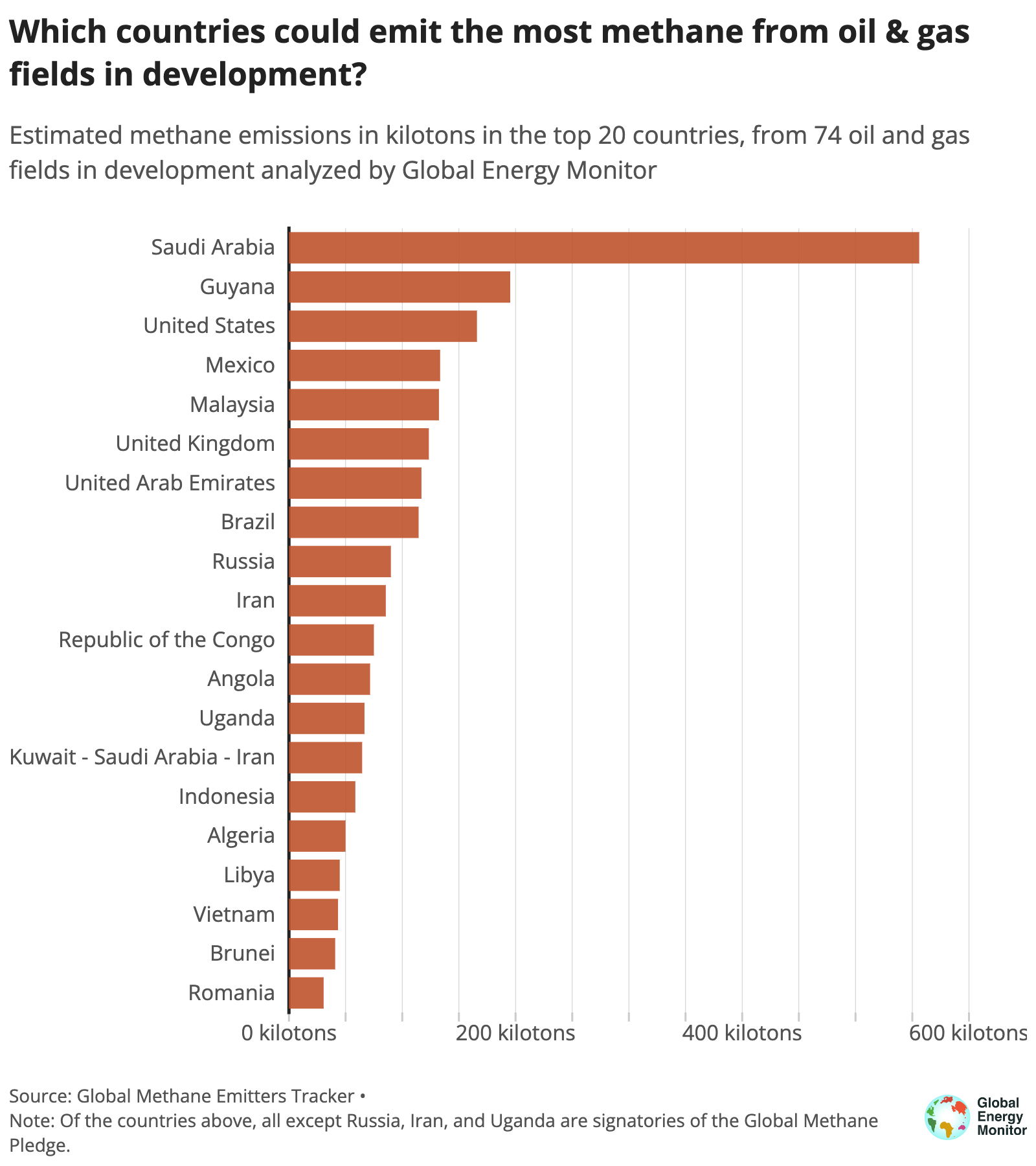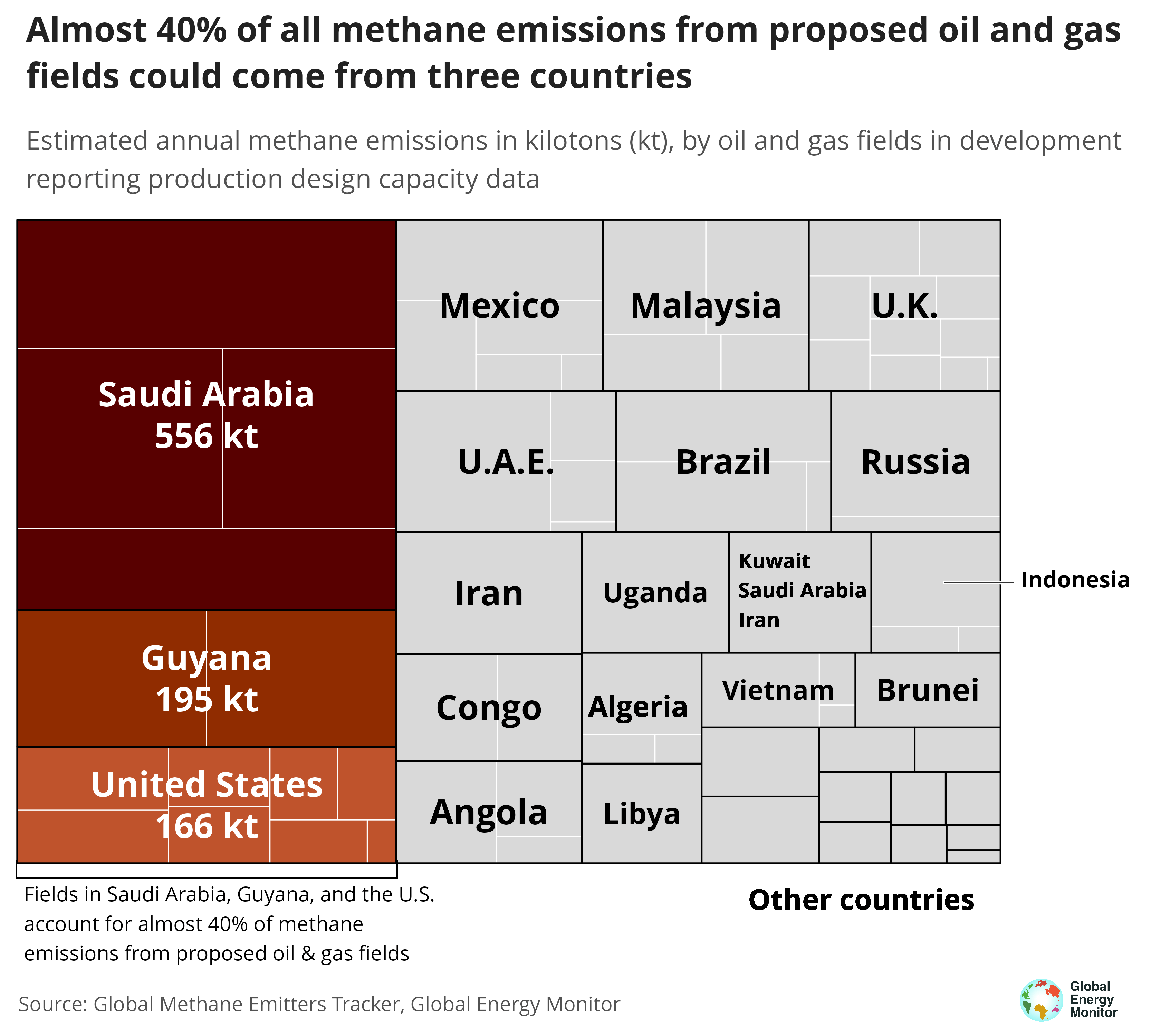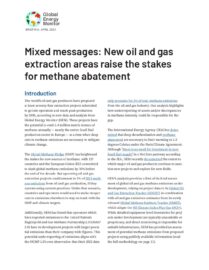Key points
- 74 new oil and gas projects could emit 2.4 million tonnes of methane annually before 2030.
- Half of those emissions come from just twelve oil and gas fields under development, and roughly a third come from four fields in Saudi Arabia and two fields in Guyana.
- Potential methane emissions from select fields in development were larger than previous company-wide figures reported to an industry watchdog
The world’s oil and gas producers have proposed extraction projects scheduled to go into operation and reach peak production by 2030 that have the potential to emit nearly as much methane as the entire fossil fuel production sector in Europe, according to new data and analysis from Global Energy Monitor (GEM).

A first-of-its-kind assessment of data in the Global Methane Emitters Tracker shows that 74 new oil and gas projects have the potential to emit 2.4 million metric tonnes of methane annually at a time when deep cuts are necessary to mitigate climate change.

One hundred and fifty-seven countries and the EU committed to slash global methane emissions 30% before the end of the decade by signing up to the Global Methane Pledge. The International Energy Agency has also called on the fossil fuel industry to cut methane emissions 75% by 2030, in order to be on pace for net zero emissions in 2050, which aligns with the goals of the Paris Agreement.
But the oil and gas extraction projects analyzed would amount to 3% of 2023 methane emissions from oil and gas production, if they operate using current practices. Under that scenario, countries and operators would need to make steeper cuts in emissions elsewhere to stay on track with the Global Methane Pledge and climate targets.
At the same time, methane emissions continue to be significantly underreported. The majority of the top 20 operators pursuing new projects did not provide data to the latest publicly available disclosure report by the International Methane Observatory’s Oil and Gas Methane Partnership (OMGP 2.0).
For some companies, GEM’s analysis finds that potential methane emissions from select fields in development were larger than 2022 company-wide figures reported to OGMP 2.0.

Methane management requires accurate measurement, and major discrepancies between the data reported by oil and gas companies and bodies set up to provide oversight are hindering these efforts.
Sarah Lerman-Sinkoff, Project Manager for the Global Methane Emitters Tracker

